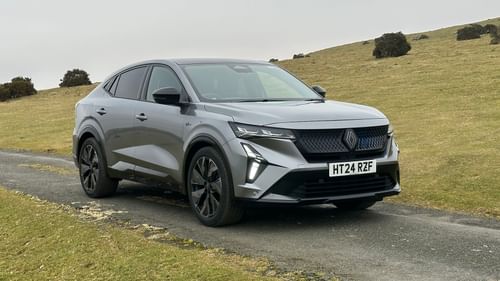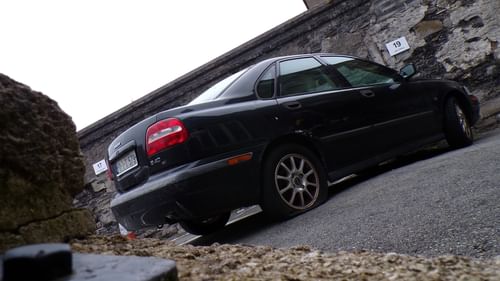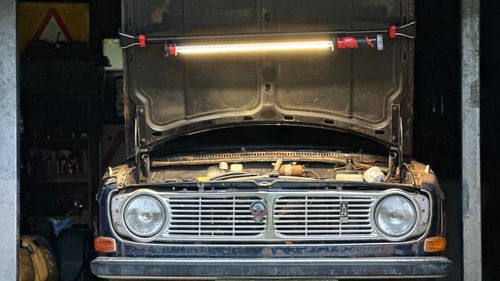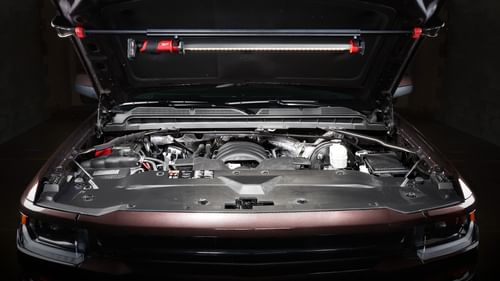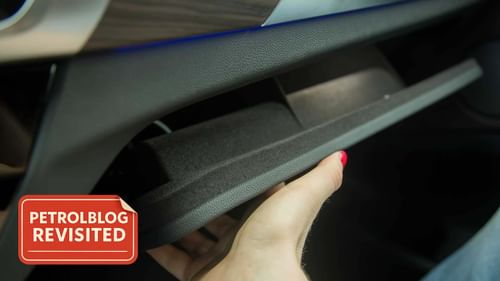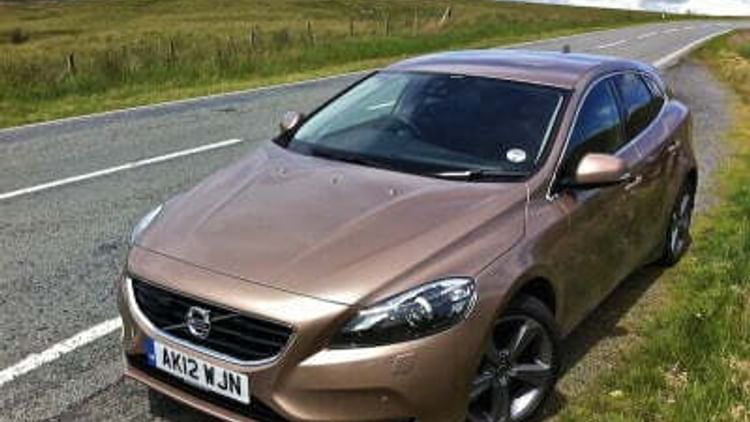
Volvo believes the launch of the V40 is the company's most significant event of the past 20 years. So it had better be good then.
Fortunately for Volvo, it is good. In fact, I'd go as far as saying the Volvo V40 is one of the most impressive new cars I've driven for many years.
To understand the significance of the V40 it's necessary to go back to 1997. This was the year Volvo withdrew the the 440 from sale and in doing so, left the five-door hatchback (C-segment) market, never to return again. Volvo sales in the UK immediately dropped from 80,000 cars a year to just 40,000.
When you consider that the C-segment accounted for 321,000 sales in the UK in 2011, you wonder why it took so long to release the V40. But under Chinese ownership and free of the shackles of Ford, Volvo has once again been left to its own devices. The result is a V40, a car that come September will be doing battle with the likes of the Audi A3, Volkswagen Golf, BMW 1 Series, Vauxhall Astra and Ford Focus.
The premium five-door hatchback market is dominated by the Germans, with the A3, 1 Series and Mercedes A-Class being the choice of the image conscious and those who demand quality. Volvo hopes the V40 will become the fourth choice and in doing so take sales away from the big three.
But such is the size of the sector that Volvo equally has the Golf, Astra and Focus in its sights. Whatever, it needs to offer something very special to cause a ripple in a pond that contains so many big fish.
Volvo believes the there are three factors that will contribute to the success of the V40 with Duncan Forrester, Head of Public Affairs, Events and Sponsorship, pointing to “a blend of Scandinavian design, safety and low emissions – thereby creating something different to the Germans”. Volvo is clearly not going for the ‘if you can't beat 'em, join 'em’ approach with the V40. Why conform when you can something a little different?
Brave? Perhaps. To be applauded? Absolutely.

Volvo chose North Wales as the location to launch the V40 in the UK, claiming that the region is the most Scandinavian of all areas in the British Isles. That's as maybe, but I think it's just as much down to the fact that North Wales just happens to be home to some of the best driving' roads this side of the Alps. Volvo would appear to have BMW in its sights when it comes to the V40's ride and handling.
At launch the V40 will be available with a choice of three disel and two petrol engines. The entry level D2 ES 1.6-litre diesel comes in just shy of £20k at £19,745 on the road, with prices rising to £26,880 on the road for the 180hp T4 1.6-litre petrol. Audi A3 Sportback ownership starts at £18,160 on the road for the 1.2 TFSI, whilst a 1 Series can be on your drive for £17,830 on the road for the 114i ES.
So you couldn't class the V40 as cheap to buy, but as we'll discover later, it's the cost of ownership that puts the V40 in a strong position. Even so, with prices on a par, if not higher than the Germans, Volvo will be hoping that Swedish design, low emissions and superior safety are enough to tempt new buyers.
Volvo is also at pains to mention that once spec adjusted, the V40 is 10 per cent cheaper than the BMW 116d, and 13 per cent cheaper than a Golf Bluemotion.
Does it have what it takes to achieve success? Firstly, we should consider the areas where Volvo thinks the V40 will excel.
SCANDINAVIAN DESIGN
The Scandinavian design influence is most evident on the inside. For years, car manufacturers have worked hard to ensure their interiors are the most Germanic on the market. The French have been playing catch-up for the past decade and some even base their entire marketing strategy of convincing us how German their car feels. Then there's Kia, who recently introduced me to the new Kia Cee'd by proudly boasting just how much Germanic the interior was compared to the previous model.

Well sorry, but you're all talking bunk. Forget the Germans, you need to be focusing more on Scandinavian design. Yes, German interiors are well screwed together and ergonomically sound, but they can also be supremely dull, bland and uninspiring. Scandinavian design on the other hand is far more appealing, offering a good blend of practicality and beauty. The V40's interior is delightful, not just overall but in detail as well. For example...
Illuminated gearshift
Sounds like a gimmick? Well perhaps it is, but in practice it works very well. The top of the shifter glows gently and although I'm sure the novelty will wear off after a while, until it becomes a common feature taken on by other manufacturers, it remains cool. Plus lighting is a crucial element of Swedish design, so in the Volvo it works because it's part of an overall theme. It also looks epic in the dark.
Rear-view mirror
In the V40, the rear-view mirror is rimless. Simple It's a hark back to the 50s and 60s and it works very well indeed.
Floating console
One of the best features on a modern Volvo is the floating centre console. I'm therefore pleased to say that it has been retained on the V40. They've also refined it a little by tapering the size down as it reaches the bottom, thereby increasing knee room for the driver and front passenger.
Personalised instrument display
The Volvo V40 allows you to choose between three dashboard displays. The default mode is ‘Elegance’ which is set-up to mimic a conventional display for the likes of speed, fuel and distance travelled. Volvo claims it will probably be the choice of the majority of people. Well the majority will be wrong as the alternative themes are far more interesting.
Firstly there's ‘Eco’ mode which, as you'd probably guess, is focused on economical driving. It glows green and includes an economy meter to ensure you're not only saving the planet, but also your wallet.
Finally there's ‘Performance’ mode and as a reader of PetrolBlog, this will be the one you'll choose most often. It glows red and displays a power rather than an economy meter. What's more, the rev counter becomes the dominant dial, with the speed digitally displayed in the centre. It's the closest a Volvo will ever get to a Honda Type R and I love it.
The seats
In keeping with other Volvos, the front seats offer a high degree of comfort and support. Volvo has also sculpted the rear seats to give the outer passengers more support. Furthermore, the passengers sit further inboard than normal, giving them a better forward view. The result is that the V40 is best suited to those who are seeking a four-seat car, although it will fit three passengers in the rear if required.
Twin boot floor
In standard form, the V40 comes with 402 litres of boot space. But it can also be equipped with an extra floor in the boot, giving it a completely flat floor when the rear seats are folded down, increasing the load space to 1,032 litres. What's more, the second floor can be used to divide the boot into compartments, with storage compartments positioned beneath it.
In truth, it's the interior that completely won me over on the V40, but the exterior isn't bad either.
I wouldn't go as far as Chris Benjamin, Design Director at Volvo, who describes it as “a 3D piece of art you can drive”, but it does look rather good. I especially like the way it harks back to the P1800 and 480, without appearing too retro. It's a definite improvement on the 440 and just shows what you leave the market for 15 years.

Other touches I like include:
Colour-coded washer jets
PetrolBlog has championed the much underrated washer jets in the past, so it's good to see somebody at Volvo shares our enthusiasm. On the V40, the jets are colour-coded to suit the car and it makes a small, but significant difference, especially from inside the car.
Theatre lighting
It's an optional extra, but you can choose one of seven different colour lighting options if you order the Winter Illumination Pack. At £1,250 the pack isn't cheap, but you do get active bending xenon lights, LEDs, heated front seats and a heated windscreen. I'd order it just for the theatre lighting.
EMISSIONS
Volvo hopes that emissions will play a big role in the V40's success and it's the D2 that will be the key to its success. On the right tyres, the V40 D2 will emit just 94 g/km of CO2, therefore ensuring you'll pay no road whatsoever. It also offers the best Benefit in Kind (BIK) figures in the sector, with just £43 or £85 for 20 per cent and 40 per cent tax payers respectively. Oh, and have I mentioned the claimed combined fuel economy figure of 78.5mpg? Make no mistake, the Volvo V40 D2 will be an extremely cheap car to live with.
SAFETY
Face it, Volvo's strongest card is the safety angle and in a game of Top Trumps with Audi and BMW, Volvo has the competition well and truly trumped. Whether the safety message is enough to win buyers over remains to be seen, but the V40's list of safety features is compelling. I'll summarise.
Pedestrian airbag
The most serious head injuries involving pedestrians and cars are caused by the hard structure under the bonnet, the windscreen's lower edge and the A-pillars. Volvo aims to minimise this risk by equipping the V40 with the world's first pedestrian airbag. Between speeds of 20 and 50km/h, the airbag will inflate if the car comes into contact with a pedestrian. The inflated airbag causes the bonnet to raise by 10cm, helping it to deform, thereby creating a dampening effect. The airbag itself covers one third of the windscreen, the entire wiper mechanism and the lower part of the A-pillar.
So if you're going to step out onto a busy road in front of a moving car, better make sure it's a V40.
Pedestrian Detection with Full Auto Brake
Volvo will also point to its Pedestrian Detection with Full Auto Brake system as another means of trumping the competition. First seen on the larger S60, the system acts as an early warning system, therefore avoiding the use of the pedestrian airbag. Put simply, a series of radars mounted on the front of the car detect if a pedestrian over 80cm tall walks into the road. An audible warning is given, combined with a flashing light in the heads-up display. The brakes are pre-charged meaning that if the driver fails to react, the brakes are automatically applied. It only works at speeds of up to 21mph, but then half of incidents occur at less than 15mph.
City Safety
City Safety, a system that seeks to avoid collisions by automatically braking the car, has been a feature on Volvos for many years now. For the V40 it has been upgraded to work at speeds of up to 31mph rather than 19mph.
To be honest, I would go on about the safety features, but it could get tiresome to read. But knee airbags for the driver, an improved Blind Spot Information System (BLIS), automatic high and low beam, new lane departure warming system, Cross Traffic Alert to help guide you out of parking spaces, adaptive cruise control and road sign recognition are just some of the safety features you'll find on the V40. It's genuinely impressive and if safety is high on your list of priorities, the V40 is the best car in its class.
It's also worth pointing out that features such as City Safety, pedestrian airbag, knee airbag, whiplash protection, Bluetooth connectivity and ISOFIX attachments in the rear seats come as standard, no matter what the trim level.

So in summary, the Volvo V40 is beautifully designed inside and out, offers low emissions, especially in D2 form and is about as safe as wrapping yourself in cotton wool and refusing to leave the house.
But to leave it that would be a crime because the V40 is actually very good to drive too.
At the launch, Volvo took a brave gamble and supplied us with a group of Audi A3s and BMW 1 Series to have a play with. Now admittedly the A3 was the old model, but for all its refinement and quality, it was just a little bit bland. The 1 Series on the other hand was a lesson in driver enjoyment. Look past the slightly ungainly looks, which are actually beginning to grow on me, and you'll find a cracking driver's car. Perfectly balanced with a brilliantly involving drive. I didn't want to give it back.
The V40 can't quite match the 1 Series when it comes to driver satisfaction, but on some glorious Welsh roads it was tremendous fun to chuck about. It's quite telling that Volvo chose British B-roads as the basis for the V40's chassis development, pointing to their camber changes, undulations, corners and potholes as the main reason for this. In fact, Volvo does 90 per cent of its damper tuning in the UK now, so you could say that the ride, handling and steering are distinctly British!
It shows, as the Volvo V40 is surprisingly good fun to drive. There's little body roll to speak of and the steering is direct if lacking in outright feel. You certainly wouldn't feel shortchanged from a cheeky dawn raid before the children wake up and because you're in a Volvo, you can sneak back through the village and nobody will know that you've just spent an hour taming your local B-road.

But if B-road hooliganism isn't your thing, the V40 is just as happy on a motorway or the school run. There's virtually no wind or road noise to speak of and on the test we were actually hearing the tyre noise from the car in front. It's got a real big car feel to it and although I don't think the V40 is necessary cheap, you'll always feel like you're driving something more much expensive than you are. No mistake, the Volvo V40 makes you feel quite special and there aren't many cars that can do that.
Of the engines, I managed to test the 115hp D2 diesel and the 180hp T4 petrol. I was fortunate enough to put the T4 through its paces on the fabled ‘Evo Triangle’ and it didn't disappoint. There's plenty of poke, with my only criticism being that it's not the most characterful of engines. We'll have to wait for the 5-cylinder T5 coming later in the year for that.
But it's the entry level D2 that impressed me the most. Look beyond the inevitable narrow power band and you'll find a willing and capable diesel unit that can propel the V40 along at quite a pace. At one point I looked down at the speedo and discovered I was doing speeds that I wouldn't want to mention here. The key to enjoyment in the D2 is to maintain momentum through the gears and anticipate your up and down shifts. But based on this drive, I can't see why you'd opt for the heavier D3 or D4 engines.

As you can probably tell, I'm a huge fan of the Volvo V40. The worrying thing is I'm nearly 2,500 words into the review and I've yet to mention any negatives. There are of course a few I should mention.
Firstly, for all the V40's brilliance on the inside, it does suffer from a lack of room in the back. For a five-door hatchback the rear legroom is tight, especially if a tall driver has the seat right back. Also, the coupé-like sloping roofline means the headroom in the back is limited for taller people and does reduce rear visibility when reversing. Finally on the inside, the handbrake is positioned on the passenger side, making it slightly annoying when doing hill starts.
You'll also need to watch the price of the options as even adding a few safety features or choosing one of the ‘special value packs’ could see the screen price rocketing by a few thousand pounds.
It would also be fair to say that the V40 might just be too refined for its own good. Perhaps a strange thing to say, but despite it being genuinely fun to drive on the Welsh roads, I never quite felt at one with the car. It was as though the roads, rather than the car were the best performer. Spending a week with the car might change my opinion.
I'm also disappointed that the forthcoming 254hp T5 version won't be available with a manual ‘box. Shame on you, Volvo. Will just have to wait for a probable V40 Polestar in the future.
But in truth, I really am searching for negatives. The V40 is a potential game changer that really deserves to succeed. Volvo needs to be applauded for taking the game to the Germans, but rather than looking to conform and play by their rules, the Swedes have done their own thing.

Don't think of the Volvo V40 as a rival to the Audi A3 or BMW 1 series. Don't even think of it as a more expensive alternative to the Ford Focus or Volkswagen Golf. Think of it as potentially the best 5-door premium hatchback on sale today. It really is that good.
And you know what, it even looks good with LED daytime running lights. And you can't say that about an Audi A3.




